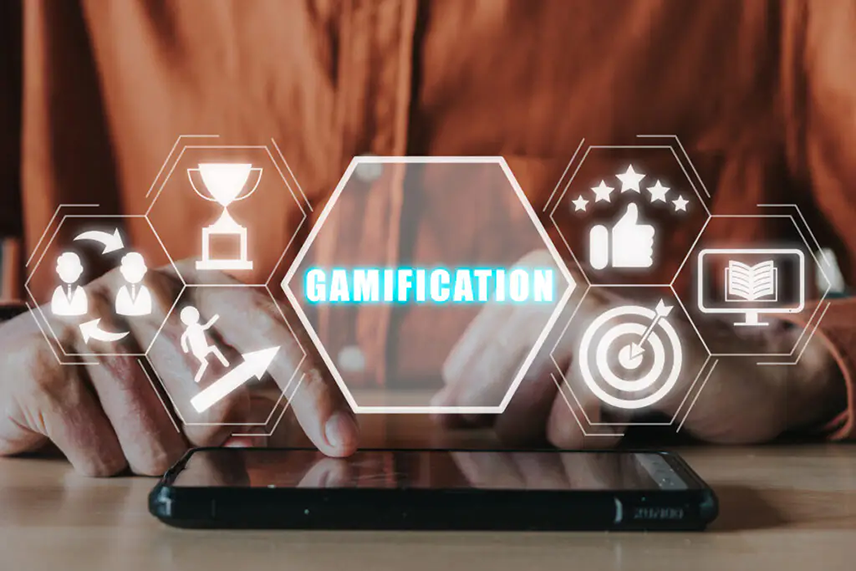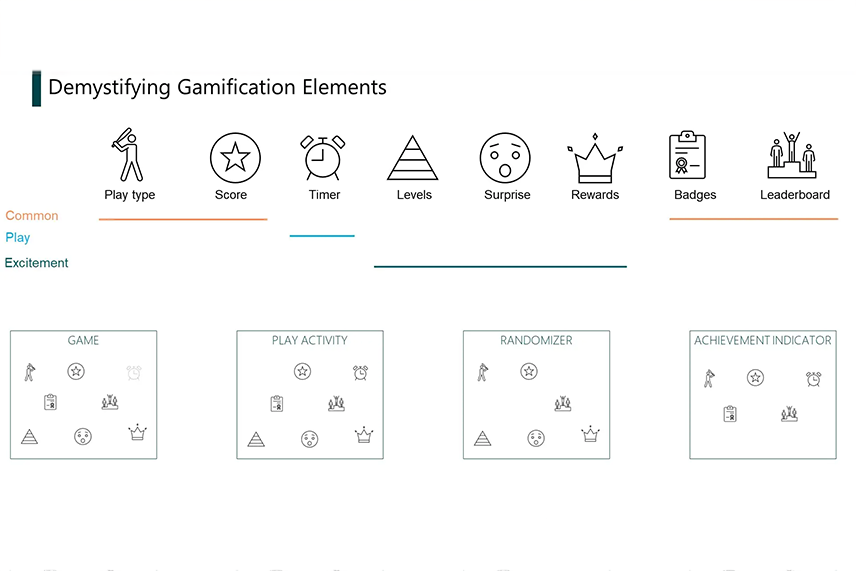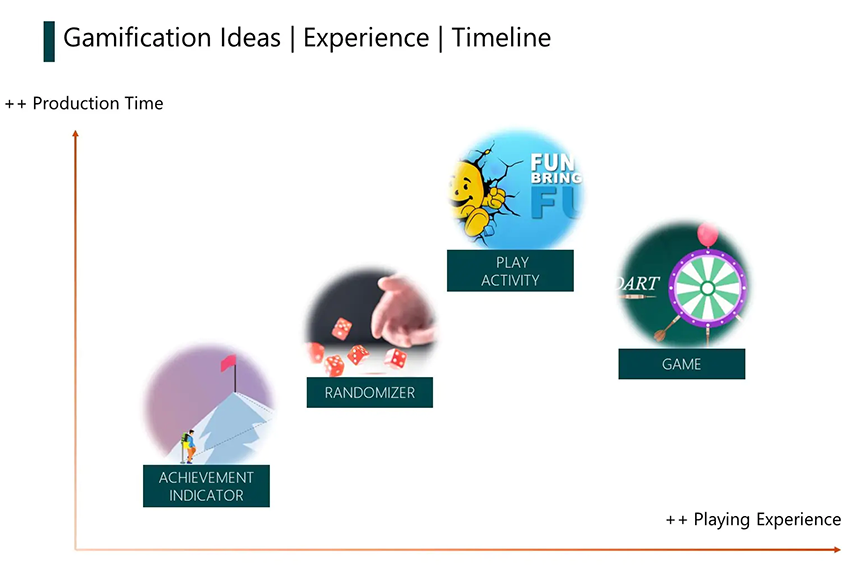
Table of Contents
Gamified eLearning modules hold immense potential for enhancing engagement, motivation, and learning outcomes. With the reducing attention span of learners and the rising need to keep learners engaged, gamification has gained significant traction in the ever-evolving L&D landscape.
Traditional learning and training methods are continually being reshaped to meet the demands of modern learners. Gamification, which involves the application of game elements or game-like mechanics to learning modules and in non-game contexts, is one of the most effective innovations transforming eLearning today.
Let’s explore what gamification entails and the effective strategies for its implementation to create gamified eLearning modules.
Understanding Gamification
Gamification transforms routine learning experiences into entrancing adventures by incorporating elements inspired by games. At its core, gamification aims to drive engagement and improve outcomes by leveraging the natural human inclination toward play and competition.
According to Spinify, 90% of employees say gamification makes them productive. Talent LMS reports that gamification can improve employee happiness by 89%. Furthermore, eLearning Infographics reveal that 80% of learners think gamified environments can enhance their performance. The benefits of gamification are many, and they go beyond maximizing engagement in learners.
Ideas for Developing Gamified eLearning Modules
Here are some simple techniques to use gamification to transform your eLearning courses for better learner engagement.
Game-Based Learning: Transform routine tasks into thrilling challenges of popular games like dart or car racing. By layering gamification experiences on top of these activities, learners can be motivated to actively participate and progress through the content.
Play Activities: Engage learners through immersive activities and scenarios where they learn by doing. For instance, sales training can be gamified through simulation experiences, allowing learners to apply theoretical knowledge in practical scenarios.
Utilizing Randomizers: Inject an element of excitement into your eLearning modules by incorporating games of chance like dice rolls or truth and dare. While these activities may not directly contribute to learning objectives, they add an element of unpredictability, keeping learners on their toes.
Implementing Achievement Indicators: Visualize progress and goals through achievement indicators, providing learners with a clear sense of direction and accomplishment. By setting milestones and tracking progress, learners can be encouraged to strive for mastery.
Want to know how to implement gamified learning using Generative AI in 5 steps? Do you know the top 8 benefits of using Generative AI for gamified learning?
Gamification Elements for Gamified eLearning Modules
Crafting captivating gamified eLearning modules relies on skillfully weaving together diverse elements customized to suit specific learning goals and audience preferences. Here are the essential gamification components for developing engaging eLearning experiences:

Play Type: Differentiate between game-based challenges, activities, or simulations to cater to diverse learning preferences.
Score: Introduce scoring mechanisms to quantify progress and incentivize active participation.
Timer: Incorporate timers to foster a sense of urgency and quick decision-making skills.
Levels: Structure content into progressive levels to provide a sense of achievement and advancement.
Surprise: Infuse unpredictability in the learning process through surprise elements to maintain engagement and excitement.
Rewards: Offer tangible incentives such as points, badges, or virtual rewards to reinforce desired behaviors.
Badges: Recognize and reward accomplishments through visually appealing badges, fostering a sense of achievement and status.
Leaderboard: Foster competition and collaboration by displaying learner rankings and achievements on a leaderboard.
Tailoring Gamification Elements for Optimal Engagement
While certain elements serve as foundational components of gamification, the effectiveness of each element in gamified eLearning modules varies depending on the context and learning objectives
Common Elements: Play type, score, badges, and leaderboards are essential components, particularly for learners accustomed to digital platforms and competitive environments.
Timer: Ideal for emphasizing quick thinking and decision-making skills, the timer element adds a sense of urgency and challenge.
Main Ingredients: Levels, surprises, and rewards constitute the core elements that contribute to the WOW factor of gamification. A thoughtful integration of these elements enhances engagement and motivation, elevating the overall learning experience.
With Harbinger’s fully customizable, plug-and-play gamification framework, you can add a layer of gamification to any learning content type. Start developing gamified content rapidly to improve learner engagement and deliver business results.
Aligning Gamification Elements with Implementation Ideas
By aligning gamification elements with specific implementation ideas, L&D can design tailored eLearning experiences that maximize engagement and learning outcomes:

Game: Incorporate all gamification elements to create immersive gamified learning experiences that captivate learners and drive active participation.
Play Activity: Rich in gamification elements, play activities may require more production time due to their interactive nature.
Randomization: While low on production time, randomizers lack certain elements like timers and badges, making them suitable for simple, luck-based activities.
Achievement Indicator: Focus on visualizing progress and goals without incorporating elements like levels, surprises, and rewards, ensuring clarity and direction for learners.
Best Practices for Developing Gamified eLearning Modules
1. Determine your business objective for creating gamified eLearning modules.
2. Practice caution when using gamification tools. Only employ tried-and-true tools.
3. Create a clear learning path for learners to follow in your gamified eLearning modules.
4. Highlight the strengths of learners with your scorekeeping mechanisms.
5. Don’t design overly competitive gamified eLearning modules that cause undue stress.
6. Don’t gamify everything in your eLearning modules. Determine which areas need to be gamified to ensure maximum engagement.
7. Create a sense of achievement by offering digital rewards for each task completed. Be sure to select the right reward system.
8. Regularly analyze the results of the gamification elements used in your gamified eLearning modules.
9. Scenarios and narratives are the heartbeat of your gamified eLearning modules. Ensure to use the best ones that clearly articulate the involvement of learners and keep them engaged at all times.
10. Test your gamified eLearning modules before deploying them. Gather feedback from learners and keep perfecting your gamified eLearning modules.
Harbinger’s scenario-based gamified solution transformed the training process for the drive-thru workforce of the world’s largest hot dog chain. Our game-based modules provided real-life experiences, simplified training, and helped the team members learn faster and achieve perfection.
Parting Thought
Gamification represents a powerful tool for transforming eLearning into dynamic and engaging experiences. By strategically incorporating gamification elements and aligning them with specific implementation ideas, L&D can create immersive learning environments that captivate learners and drive meaningful outcomes. With a blend of creativity, technology, and instruction, gamified eLearning modules hold the promise of revolutionizing learning and training in the digital age.
Contact our eLearning experts if you would like to create gamified eLearning modules or explore Harbinger’s plug-and-play customized gamification framework.






